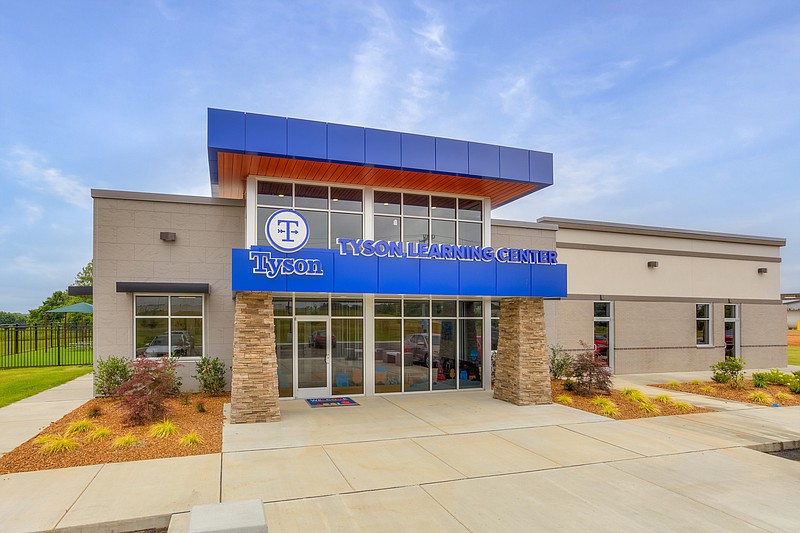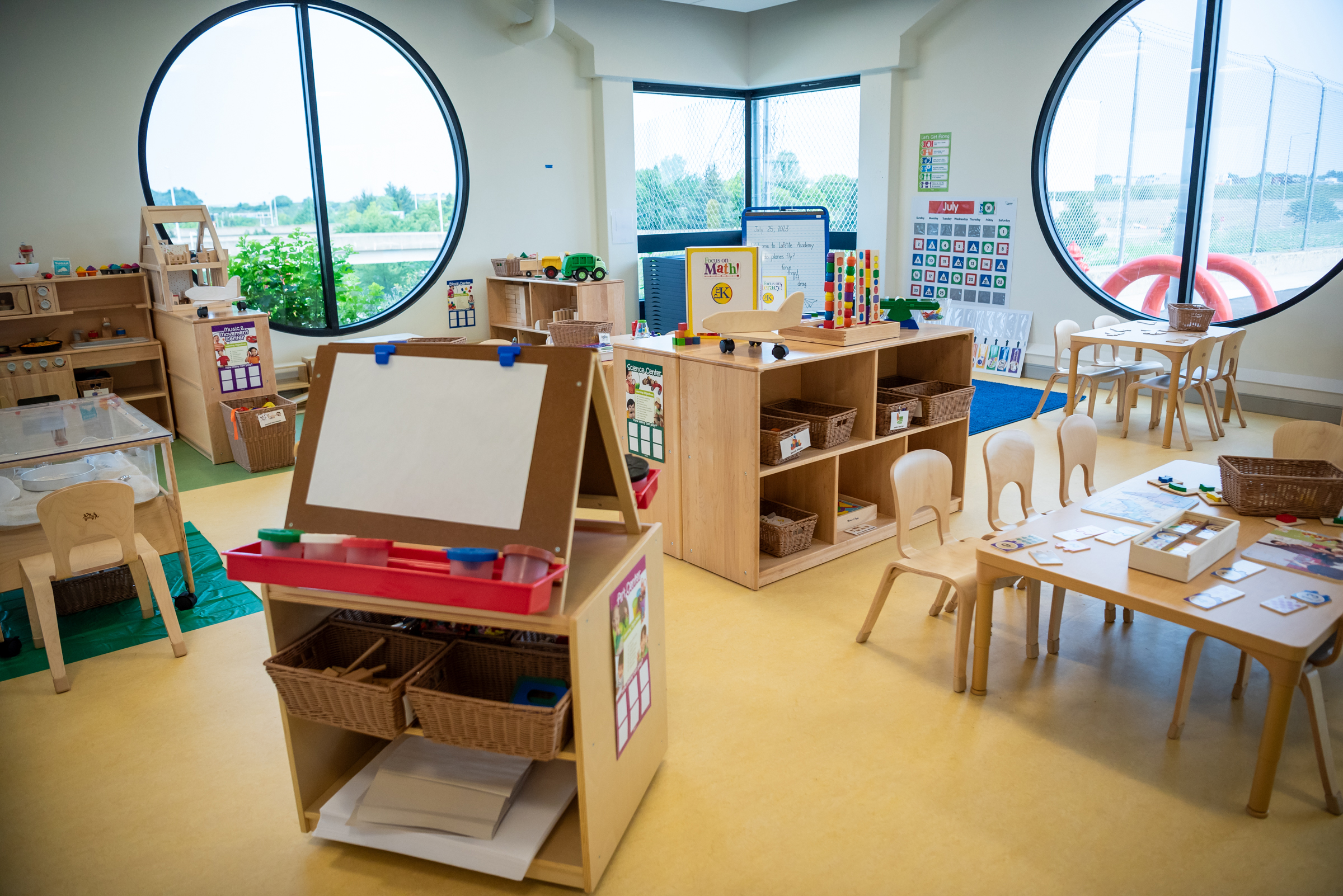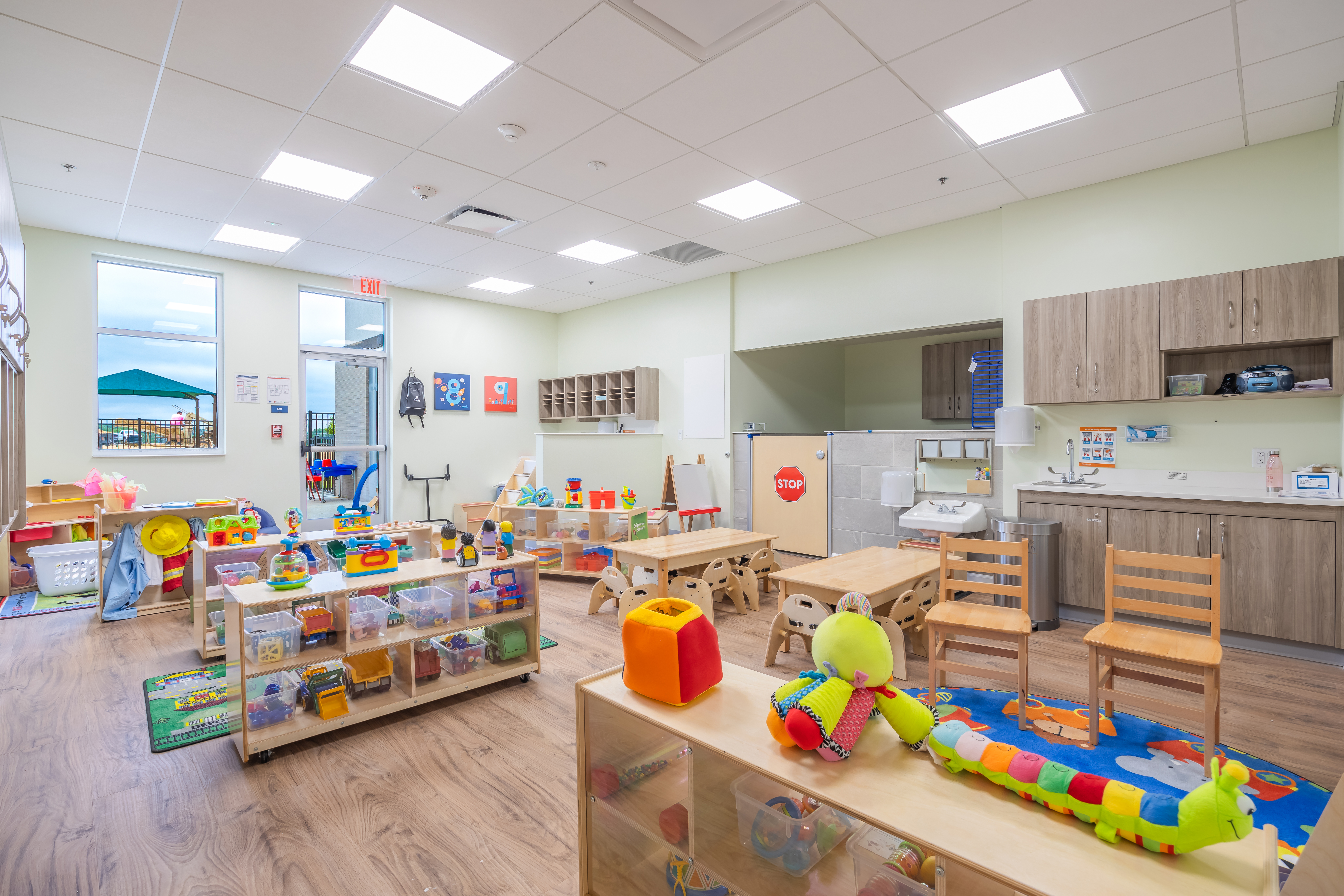On-site child care has become the latest -- and often, priciest -- new way for businesses of all sizes to attract and keep employees. That's particularly the case in understaffed industries such as manufacturing, retail and education that have struggled to find low-wage workers in communities where child care is often scarce.
A lack of readily available options is keeping many workers on the sidelines and contributing to long-standing labor shortages, which could be exacerbated by the recent expiration of $24 billion in federal child-care funds.
"We are seeing a real renaissance in increased interest for on-site centers," said Stephen Kramer, chief executive of Bright Horizons, which operates 400 employer-sponsored child-care facilities for companies such as Home Depot and convenience store chain KwikTrip. "Coming out of the pandemic, interest has certainly eclipsed what we have seen in our history."
Although on-site centers have typically been clustered in city centers and wealthy suburbs, near corporate headquarters and office workers, Kramer said there has been a shift toward lower-income, rural areas that are more likely to be "child-care deserts." As a result, today's employer-run day cares are increasingly being built not for white-collar executives, but elementary school teachers, airport luggage handlers and hourly workers who toil on assembly lines.
In Humboldt, Tenn., Tyson Foods' new child-care center opens at 5:30 a.m., so parents can get to their 6 a.m. shifts on the poultry processing line. Between company subsidies and state assistance, parents pay an average of $1.60 an hour for care. Executives say they hope to eventually keep the center open until 1 a.m. to accommodate night-shift workers at the poultry plant down the street.
"We have struggled to get enough people to work with us and stay with us," said Garrett Dolan, who works in human resources for the company. "That got us thinking: We're in a child-care desert, there's nothing available. We're going to have to build this thing ourselves."
The country was already short millions of child-care spots before the pandemic, when sudden shutdowns forced 20,000 child-care centers -- or 1 in 10 nationwide -- to close permanently, according to the Century Foundation. A $24 billion lifeline from the government kept many afloat until last month, when the last of those federal funds ran out.
Since then, lawmakers have rallied for additional money, to no avail. President Joe Biden last week reignited that effort when he asked Congress for $16 billion to support child care. But industry experts say that money -- if and when it is approved -- will barely help maintain the status quo. It's becoming clear, they say, that it will take broader, more immediate action to make child care affordable and accessible for working parents.
"Parents and children need solutions now," said Jessica Brown, an economics professor at the University of South Carolina. "They don't have time to wait around for policymakers to put through proposals that will make their lives better some day. That's why companies are filling this gap however they can."
It makes business sense, too. Employers lose an estimated $23 billion a year because of child care-related complications, resulting in a $122 billion hit to the U.S. economy, according to a recent study from ReadyNation. The group, part of the bipartisan Council for a Strong America, found that the pandemic and "insufficient policy action" have significantly worsened access to child care around the country.
At KinderCare, one of the country's largest day-care operators, the number of employers looking for information about on-site child care has risen 54% in the past year, according to Dan Figurski, president of KinderCare for Employers. Companies are also increasingly looking for backup care options for emergencies, and offering tuition subsidies to employees, covering roughly 20% to 50% of their day-care and aftercare costs.
"The phone continues to ring with employers asking us to help them solve child-care needs that, quite frankly, they didn't think they needed to be a part of before covid," he said. "I think it's catching many of them off-guard. Every employer I speak with says the labor market is still tough, finding talented people is still tough."
In Wisconsin, charter school founder Kaleem Caire noticed a clear shift after the pandemic -- suddenly teachers and administrators were quitting their jobs, at least for a year or two, because it was becoming so difficult to find infant care in the area.
His executive assistant left the workforce for a year while she waited for a spot to open up at a local day care. When she became pregnant with her second child earlier this year, Caire knew he couldn't lose her again. Using a $100,000 grant from a nonprofit, he converted a space off the school cafeteria into a staff day care for up to eight infants.
"We're losing too many educators in America," said Caire, chief executive of One City Schools. "So few people are coming into this field as it is. And now we're losing them at the top and in between because of issues like child care. It's a desperate situation."
The center, when it opens in two weeks, will cost $255 a week for infant care after factoring in a 25% subsidy. The best part, for Caire: All of his employees are staying.
"I had five employees who were about to have babies, asking if they could go part-time or take a year off," he said. "And now that's just not a concern anymore."
The U.S. job market has undergone massive shifts in recent years as Americans rethink their career plans and prioritize work-life balance. Many quit in-person work early in the pandemic, leaving fields such as education, retail and hospitality in favor of more flexible, higher-paying office jobs. Employers have struggled to refill their ranks: There are still 3 million more job openings than there are people looking for work.
Micron Technology, a semiconductor company based in Boise, Idaho, is preparing to open a day care across the street from its headquarters. It is also building an on-site child-care center near an upcoming manufacturing plant in central New York. But first, the company is investing $500,000 to train care providers and early-childhood teachers in the area. By the time the factory opens in three years, the company hopes to have enough teachers in place to provide child care to 9,000 employees.
"The infrastructure is really what's broken -- we need more people to work in child care, and we need a career pipeline," said Marni McDowell, the company's senior director of global well-being. "People can't come to work if they don't have child care. And you can't have child care if there aren't workers. The problem just feeds on itself."
Despite the momentum, building an on-site day-care facility can be costly and time-consuming. It can be impractical, too, for companies whose workforces are spread around the country or for employees who'd prefer care closer to home instead of at their workplace. To that end, many more companies are providing subsidies that can be used anywhere, depending on parents' needs.
Tootris, a service that connects parents with child-care providers, has seen a sixfold increase in employers -- ranging from the City of San Diego to Mazda Toyota Manufacturing -- looking for ways to offset workers' child-care costs this year. Many are offering parents $3,000 to $5,000 a year to spend on any type of care, including preschool, summer camps or after-school programs, according to senior director Eric Cutler.
"The reality is, most parents have a variety of care needs, so one solution isn't enough," he said. "No matter what your schedule is, what your income is, child care is a key necessity for a parent to be able to stay active and employed. The brutal reality for working parents is: No child care, no work."
That has been clear at Pittsburgh International Airport, where executives have taken a number of measures -- including adding public bus routes to make it easier for people to get to work and creating apprentice programs to draw new employees. But one of the biggest hurdles remained: a lack of child care in the area, which is about 20 miles from downtown.
Last month, the airport opened a child care center in a former US Airways concourse. The facility serves about five dozen children and is open from 6:30 a.m. to 6:30 p.m., though executives hope to add around-the-clock care to accommodate night-shift workers.
Both Trudi and Ben Shertzer work at the airport -- and now their son Hunter, 11 months, goes to work with them, too.
Ben usually drops the infant off at the newly opened day care just before 8 a.m., then heads to his job as a wildlife administrator. Trudi, an operations manager at the airport, sometimes stops by during the day to say hello.
"It was quite the roller coaster before I was about to give birth: Day care waitlists were so long, we were talking to babysitters but we just didn't know what would come through," she said.
The addition of the child-care center "was absolutely wonderful news," she said. It has simplified her family's commute and given her peace of mind while at work.
Plus, she said, her son loves watching the airplanes take off.


